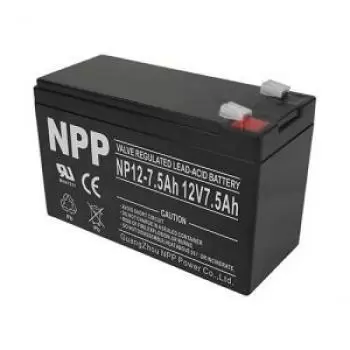
In solar power terms, a solar battery definition is an electrical accumulator to store the electrical energy generated by a photovoltaic panel in a solar energy installation. Sometimes they are also known as photovoltaic batteries.
When we install solar panels in an autonomous facility, a battery system is mandatory to ensure we will have power when we need it. Moreover, in case our home is connected to the electrical grid, home batteries are helpful in case of a power outage.
Solar battery technology stores the electrical energy generated when solar panels receive excess solar energy in the hours of the most remarkable solar radiation.
Not all photovoltaic installations have batteries. Sometimes, it is preferable to supply all the electrical energy generated by the solar panels to the electrical network. Extensive electrical facilities that use renewable energy are connected to the electrical grid.
How do solar batteries work?
The batteries have the function of supplying electrical energy to the system at the moment when the photovoltaic panels do not generate the necessary electricity.
When the solar panels can generate more electricity than the electrical system demands, all the energy demanded is supplied by the panels, and the excess is used to charge the batteries.
Batteries transform the electrical energy they receive from photovoltaic modules into chemical energy. This conversion is carried out from the reaction that occurs when two different materials, such as those of the positive and negative plates, are immersed in the electrolyte. The electrolyte is a solution of sulfuric acid and water.
Electricity flows from the battery as soon as an electrical circuit is connected between the positive and negative poles.
As the battery discharges, the lead composition in the plates is more similar. At this time, the density of the acid decreases, and the voltage between terminals decreases.
The ability to undergo a constant charging and discharging process is known as the cycling resistance of a battery.
Solar batteries work using DC electricity. Since the PV panels generate a direct current, there is no problem when charging. However, most domestic devices at home work using AC. Usually, the system has an inverter that converts DC into AC.
What is the lifespan of a solar battery?
The useful life of a battery for solar installations is usually around ten years.
However, their useful life plummets if frequent deep discharges (> 50%) are made. Therefore, it is advisable to install enough capacity so that 50% of the discharge is not exceeded.
Another crucial factor is temperature. The useful life will be around ten years if the temperature is kept between 20 and 25ºC. On the other hand, if the temperature is altered by 10ºC, the useful life can be reduced by up to half.
Battery types for solar power
Batteries are classified according to the type of manufacturing technology as well as the electrolytes used.
The types of solar batteries most used in photovoltaic installations are lead-acid batteries due to the price ratio for available energy. Its efficiency is 85-95%, while Ni-Cad is 65%.
Undoubtedly the best batteries would be lithium-ion batteries, the ones used in mobiles. However, the lithium battery is not economically viable for this application.
Lead acid batteries for solar applications
Lead acid batteries are the oldest rechargeable batteries. These batteries can deliver high currents; therefore, their cells have a high power density.
This characteristic and their low price make them suitable for many applications, particularly solar energy, solar kits, and motor vehicles. After all, they can deliver the high intensity that starters need.
Because they are cheaper than any other type of battery, lead-acid batteries are widely used. However, these batteries have a low energy density in terms of volume and weight.
So if you want to accumulate large amounts of energy, the size of the battery will have to be very large. For this reason, it would not be the best choice for applications that require an offset—typically used in large spaces.
They can be used to store safe food sources such as cell phone towers, hospitals, solar installations, and off-grid electrical systems.
All lead acid batteries fail prematurely when not fully recharged after each cycle.
If a lead-acid battery is left discharged (for days) at any time, it will cause a permanent loss of capacity.
Liquid batteries - liquid electrolyte
Liquid batteries store energy using a rechargeable fuel made of electrodes or nanoparticles. This fuel is in a liquid state.
There are two types of liquid batteries:
-
Open, with lids that allow the water to change.
-
In a sealed way, closed but with valves that enable possible gases to escape during excessive loads.
AGM Batteries - Absortion Glass Mat Battery
They are the most modern batteries, and the acid is fixed in fiberglass that absorbs it. In these types of batteries, the acid is absorbed better and faster by the battery's lead plates.
Almost all AGM batteries are valve regulated: VRLA (valve regulated lead acid)
There is an increasing trend toward lead AGM batteries, which have their best life/price ratio.
The liquid battery may be the best option for someone who can secure the necessary care.


